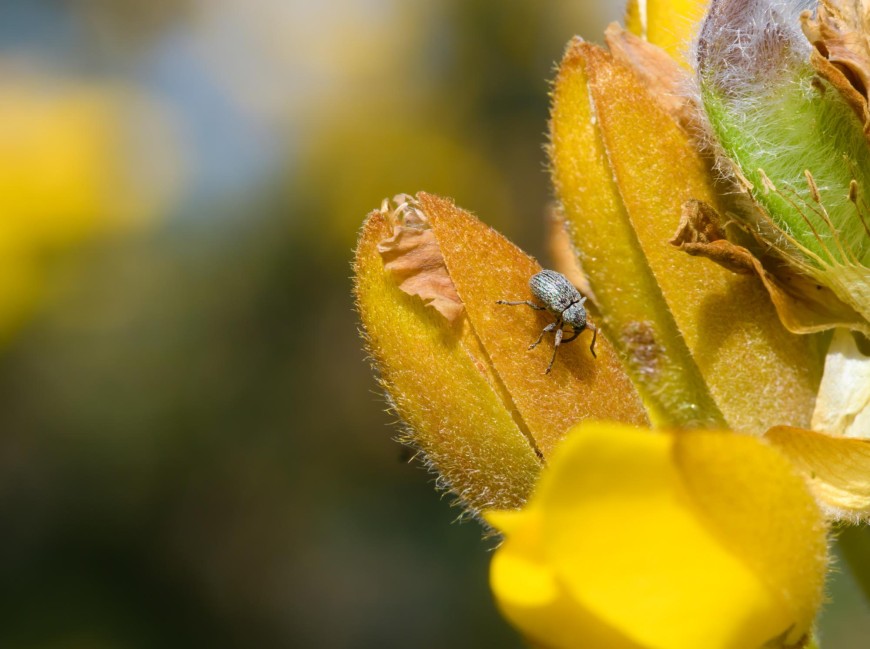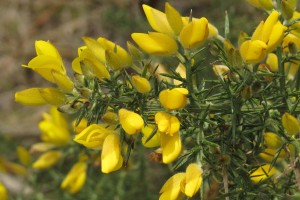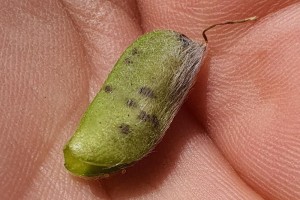Gorse seed weevil
History in New Zealand
Gorse seed weevils are native to Europe, and they were one of the first biological control agents to be introduced to New Zealand. This species was imported from England by the Cawthron Institute and released between 1931 and 1946. The weevils established readily within 10 years and are now abundant and widespread. The adult weevils fly strongly and can find isolated bushes.
How would I find/recognise it and what is its lifecycle?
You may see the small (1.8-2.5 mm long) grey, pear-shaped adults on gorse bushes all year round, but they are easiest to find in spring and early summer. The adults have a long, curved snout (rostrum), characteristic of the weevil family. The females tend to have larger rostrums than the males and are bigger overall. If you cannot see gorse seed weevils on a bush, try dislodging some by tapping gorse over a beating tray.
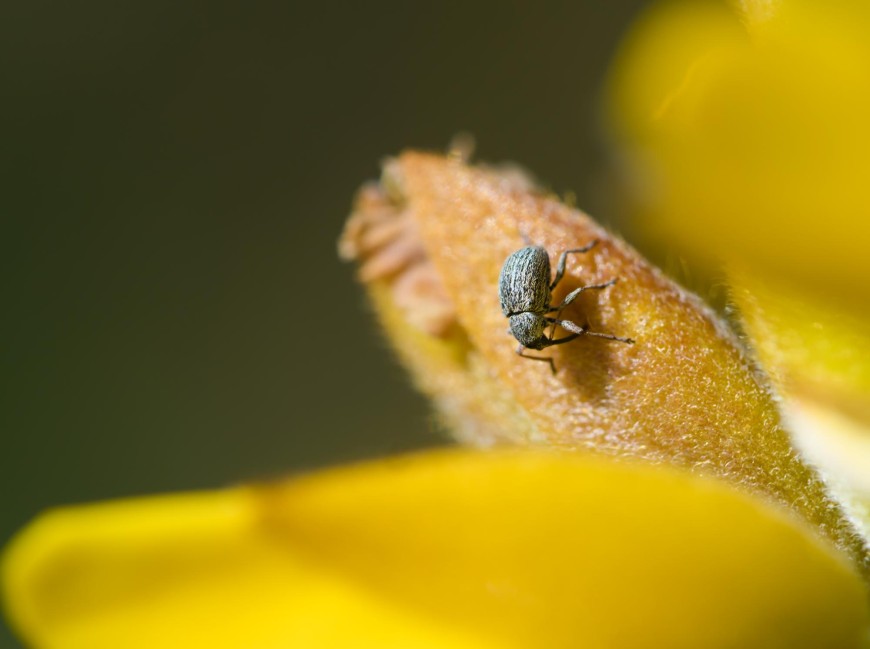
Image: gorse seed weevil (Exapion ulicis).
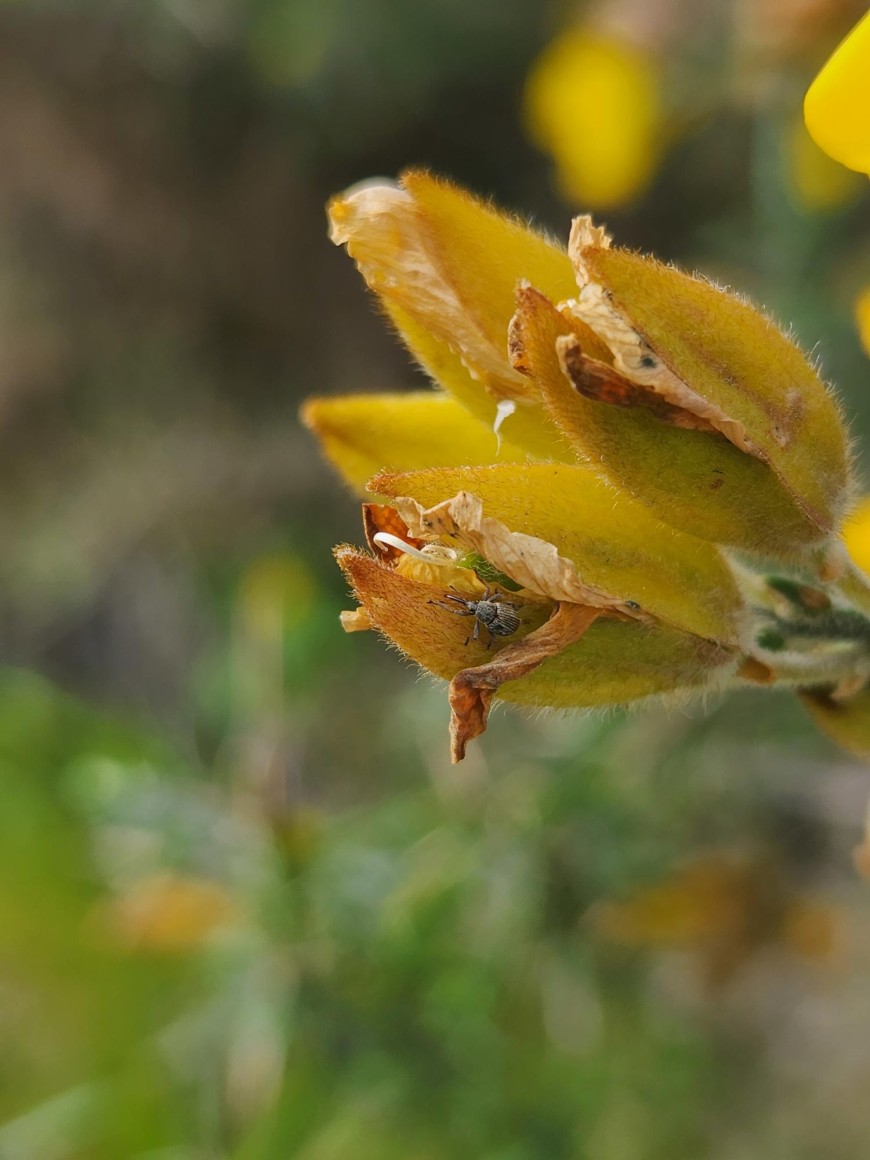
Image: gorse seed weevil (Exapion ulicis).
Female gorse seed weevils chew small holes in the walls of young pods into which they lay eggs, either singly or in clusters of up to 20. To see the yellow eggs, split open some young green pods in the spring. The eggs take about a month to hatch.
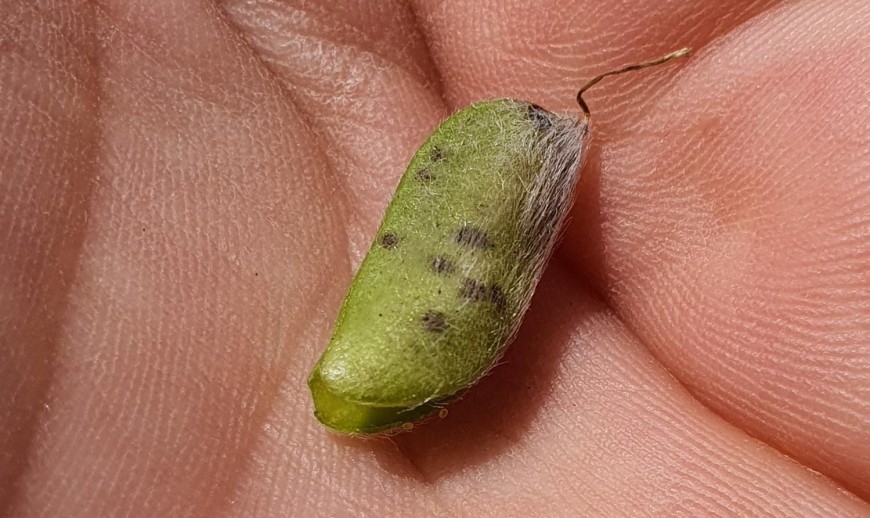
Image: oviposition holes made by female gorse seed weevil.
You may also see the larval or pupal stages inside the pods. The larvae are white, squat, legless grubs, with small brown heads. They feed on the seeds for about 6-8 weeks and grow to about 2.5 mm long. Once fully grown, the larvae enclose themselves in white pupal cells. The grey pupae develop inside the pods for about a month.
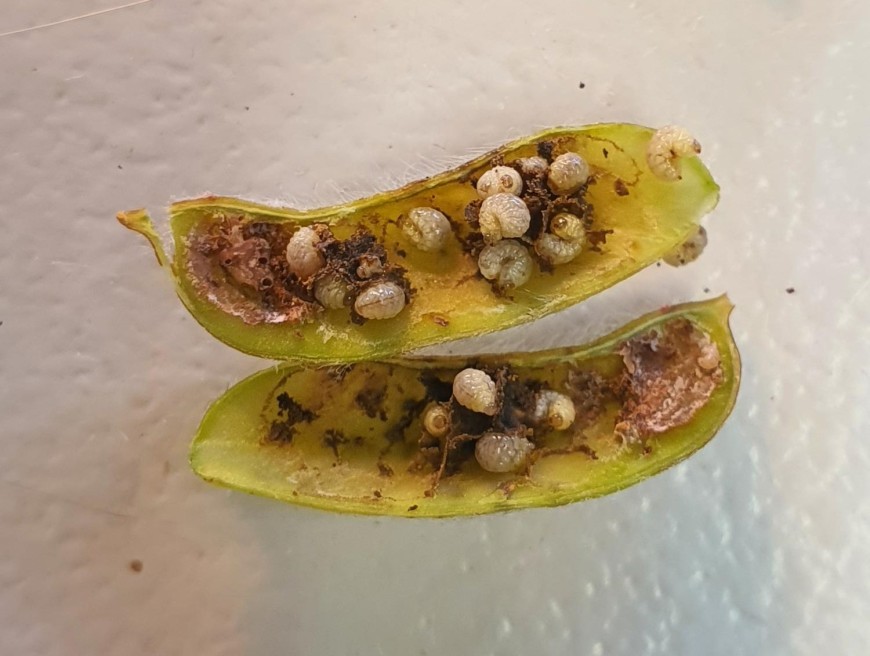
Image: gorse seed weevil larvae inside a seed pod.
The new adults emerge when dry pods burst open - they die if the pods fail to open. The new adults hibernate on gorse plants during the winter and breed the following spring. There is only one generation each year, and the adults can live for up to 12 months.
If you find one single creamy-white caterpillar inside a pod then you have found the other agent that feeds on gorse seeds, the gorse pod moth (see Gorse pod moth). You may also see a tiny wasp-like parasite (Pteromalus sp.) that sometimes attacks gorse seed weevil larvae and develops with them inside the pod. The gorse seed weevil is easy to differentiate from other gorse biocontrol agents and insects commonly found on gorse.
See Gorse colonial hard shoot moth, Gorse soft shoot moth, Gorse spider mite, Gorse thrips, Gorse pod moth, and Native insects that damage gorse.
How does it damage Gorse?
Adult gorse seed weevils feed on the foliage and flowers, but the damage is insignificant. The main damage is caused by the larvae destroying seeds.
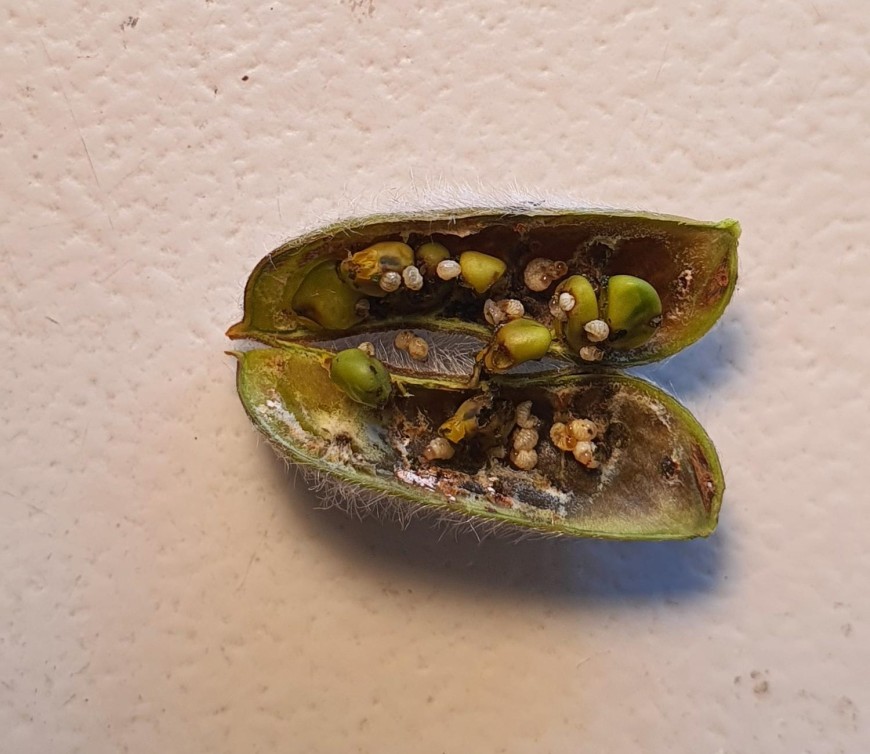
Image: gorse seed weevil larvae feeding on gorse seeds.
Will it attack other plants?
No, gorse seed weevils will only damage gorse seeds.
How effective is it?
In some areas gorse seed weevils destroy up to 99% of the seeds produced during the spring-summer flowering period but in others the impact is minimal. A recent study in Canterbury at a high altitude site on the Summit Rd showed joint destruction between the gorse seed weevil and the gorse pod moth of just 56% of spring/summer seed crop with the gorse seed weevil taking 42%. Recent work in the Manawatu at a low altitude site showed joint destruction of only 21% of the total crop (included autumn/winter seeding) with the gorse seed weevil taking just 5% of spring/summer seed crop. In response to the climatic conditions in New Zealand, gorse can also flower and produce seeds in the autumn and winter, mostly in the North Island, escaping gorse seed weevil attack. Gorse seed weevils are only able to reproduce in the spring, and are therefore unable to exploit the second peak of seed production. As a result the gorse pod moth was released to complement the activity of the gorse seed weevil. Gorse pod moths have two generations a year to coincide with both peaks of seed production.
How can I get the most out of it?
Because gorse seed weevils are widely established you do not need to do anything except avoid activities that will interfere with their life cycle. If you are undertaking control measures over a large area then leave a few bushes nearby to act as a gorse seed weevil reservoir. In areas where they are not common this is likely to be because conditions are not suited to them.
How do I select a release site?
Read Guidelines for selecting release sites for biocontrol agents.
How do I collect it for release at other sites?
NA.
How do I manage the release sites?
NA.
Key contact


